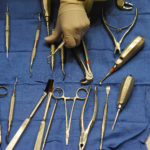World Health Organization defined alcoholism as long-term or occasional drinking of alcoholic beverages. Which also leads to loss of control over drinking and frequent intoxication. Alcoholics think only about drinking. And also continue to drink more heavily despite its obvious consequences. Thay can be physical, psychological, social and economic.
Alcoholic is a person who drinks alcohol for a long period of time. That develops an addiction to drinking. That can also lead to behavioral disorders and damage to mental and physical health. This term also includes those who show the beginning of the alcohol use disorder.
 Alcoholics can be divided into mental and physical addicts. Mental addicts drink to help themselves to overcome everyday difficulties. Most notably hardships of life.
Alcoholics can be divided into mental and physical addicts. Mental addicts drink to help themselves to overcome everyday difficulties. Most notably hardships of life.
While physical alcoholics feel metabolic conditioned cravings for alcohol. That forces them to drink every day. As in drug addicts, alcoholics have abstinence crisis and they lead to recognizable symptoms.
Such as anxiety, restlessness, rapid heart rate, sweating and trembling hands. Some of the others being nausea, vomiting, mental excitement and insomnia. Epilepsy and transient phenomena of contact and auditory and visual hallucinations could also develop.
Drinking addiction is considered a disease or severe mental disorder. That makes the pathological changes in the brain adversely impacting its way of functioning. And can also affect other organ systems in the body.
Alcoholism may lead to:
- gastric system lesions like nausea, vomiting, esophagitis, and esophageal cancer. But also to gastritis, liver cirrhosis, hepatitis, and alcoholic pancreatitis. Changes on teeth, gums, and oral mucosa can also develop.
- nervous system disorders. Like the death of brain cells, damage to a cerebellum and peripheral nerves. And also damage to the optic nerve, neuropathies, and encephalopathy.
- damage to the cardiovascular system like alcoholic cardiomyopathy, and hypertension.
- skin lesions like pellagra and bluish color of the face – facies aethylica.
- respiratory diseases (tuberculosis).
- reproductive system disorders and sexual dysfunction. Which manifest as decreased ability to get an erection and deterioration of testicular tissue. But also the reduction of fertile ability, complications in pregnancy and childbirth or miscarriages.
- mental disorders like depression, aggression, psychosis, memory loss, and hallucinations.
Also, the life expectancy of alcoholics is from 10 up to 12 years shorter than in non-alcoholics. Further, the mortality rate of alcoholics is 2.5 times higher than average.
 The impact of drinking on oral health
The impact of drinking on oral health
Frequent drinking is dangerous for the health of the entire body. And that includes the mouth. In person addicted to drinking , tooth decay, gum disease and tongue, throat and larynx cancer are much more frequent. The risk of oral cancer can be further extended if the alcoholic is also a smoker.
In patients who are long-term heavy drinkers, the salivary glands may become enlarged. And that means especially parotid glands. This condition is called sialadenosis. And it is associated with ethanol-induced peripheral neuropathy.
Such condition causes disturbances in the metabolism and excretion of the salivary glands. Reduction of saliva secretion, and reduction of it’s buffer capacity leads to increased risk of caries and gum disease. This is because it looses it’s ability to neutralize acids.
Other damaging factors are consumption of sweetened drinks and carcinogenic foods. Those are foods which contain carbohydrates that decrease salivary pH and promote dental caries. Added to that is bad oral hygiene. Drinking alcohol also increases the risk of periodontal disease. And it doesn’t even matter what kind of type of alcohol a person drinks.
 People addicted to drinking belong to the group of patients which have a big risk of dental erosion. This is because drinking increases the risk of damaging of the enamel in a direct and indirect way.
People addicted to drinking belong to the group of patients which have a big risk of dental erosion. This is because drinking increases the risk of damaging of the enamel in a direct and indirect way.
Frequent and prolonged consumption of acidic drinks (e.g. wine) acidifies the oral cavity. And also the tooth surface which makes them more susceptible to mechanical damage. For example brushing teeth.
So, alcohol addicts often vomit due to the relaxation of the lower esophageal sphincter. And that is under the influence of ethanol. The acidic content of the stomach enters the mouth and causes erosion of the enamel. Acidification of the mouth is further aided by reduced secretion of saliva. And also it has reduced buffering capacity which increases the risk of tooth erosion.
Erosion threatens the most palatal surfaces of the upper teeth. Like the chewing (occlusal) surfaces of the posterior teeth. And also the incisal edges of the front teeth. The lower teeth and buccal surfaces of the upper teeth are somewhat less vulnerable to erosion.
Epidermal growth factor is, produced by salivary glands. And is also an important factor in protecting the oral mucosa from sn injury that acids can cause. Reduced secretion of saliva is one of the consequences of excessive drinking. There is also a reduction in the quantity of epidermal growth factor. And that increases the risk of ulcerations in the oral mucosa caused by acids.
Alcohol is the main factor that is responsible for the increase of head and neck cancer cases. Especially in the USA. Many studies have shown that drinking alcohol can be the cause for the incidence of many cancers. Such as gastric cancer, colorectal cancer, breast cancer, liver cancer and lung cancer.
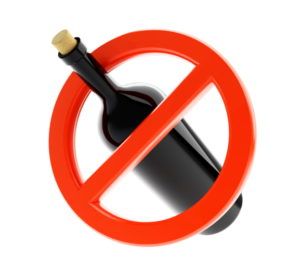
In the mouth, pharynx and esophagus the most common is squamous cell carcinoma. And also adenocarcinoma. It is believed that 75 to 90% of all oral cancers may be associated with smoking and/or alcohol.
These cancers can be easily detected. Unfortunately the number of cancers of the mouth and pharynx diagnosed early is small. In people with long-term and frequent drinking squamous cell carcinoma of the mouth usually appears on the tongue. To that add smoking habits.
The appearance of malignant formation occurs because a metabolite of ethanol. Which causes DNA damage. And also oncogene expression of oral keratinocytes. An oncogene is a gene that has the potential to cause cancer. And that is when an oncogene becomes activated normal cell and is converted to a cancer cell.
In fact, after a person consumes alcohol, ethanol is absorbed in the intestines. And is also distributed in the body fluids. So, the concentration of ethanol in the blood is equal to that of saliva. Saliva then comes into contact with oral bacteria and fungi. Which contain enzyme alcohol dehydrogenase which oxidizes ethanol into acetaldehyde. Also, cells of oral mucosa also contain alcohol dehydrogenase and produce intracellular acetaldehyde.
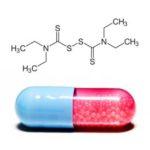
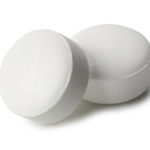 Alcoholics who are taking preparation disulfiram may have altered sense of taste. Most often it is a metallic taste. It also can be a flavor that looks like the one that appears after the consumption of garlic.
Alcoholics who are taking preparation disulfiram may have altered sense of taste. Most often it is a metallic taste. It also can be a flavor that looks like the one that appears after the consumption of garlic.
This change of taste usually disappears during the first two weeks of taking disulfiram. If used for the treatment of alcohol addiction naltrexone may cause dry mouth or xerostomia. And also a pharyngitis, sinusitis, noise in the ears (tinnitus) and headache.
Besides direct harmful effects of alcoholism on oral health, there are also indirect effects. Which can also manifest as a result of insufficient and inadequate nutrition. The most common are inflammation of the tongue (glossitis) and inflammation of the gums (gingivitis).
Inflammation of corner of mouth (angular cheilitis) can also develop. In the early stage of glossitis, the tongue is painful and smooth. But also has enlarged fungiform papillae. In later stages, a burning sensation of the tongue appears and it becomes intensely red.
Also, atrophy of filiform and fungiform papillae occurs – they shrink and disappear. Angular cheilitis leads to the formation of painful cracks at the corners of the mouth. While gingivitis manifests as necrotic areas on the top of interdental papillae.
Dental treatment of persons addicted to alcohol
A dentist has the right to refuse to treat persons deemed to be under the influence of alcohol. This is because of possible unpredictable behavior which can lead to injuries. And also because of possible interactions between alcohol and compositions used during dental procedures. For example local anesthetics.
To alcoholics who are not under the influence of alcohol, it is possible to conduct dental procedures. Such as cleaning of tartar and curettage of periodontal pockets. And also the removal of caries and making fillings. There is also no problem in making prosthetic appliances and the like. If necessary, local anesthesia can also be given.
 To heavy addicts sometimes dental procedure needs to be done which can cause lot of bleeding. Examples of that would be complex tooth extraction and oral or periodontal surgery.
To heavy addicts sometimes dental procedure needs to be done which can cause lot of bleeding. Examples of that would be complex tooth extraction and oral or periodontal surgery.
Before any surgery a general medical evaluation should be made. Such evaluation includes complete blood count and coagulation profile. But also an assessment of the functionality of the liver. And if needed other tests ordered from the dentist.
Before any dental treatment, it is a must to take a complete medical and dental history. This is to find out more about the habits related to alcohol consumption. Such as diseases that the patient dependent on alcohol is suffering from.
And also medicines taken. All in order to reduce the potential for unintended consequences. Which may occur due to the implementation of the dental procedure. But also because of the drug interactions with alcohol.
The alcohol addicts, during oral surgery procedures a prolonged bleeding may occur. This is because of the prolonged drinking which slows down the maturation of cells in bone marrow. Those cells are called megakaryocytes. That leads to a reduced number of platelets. And also to the inhibition of the thromboxane A and B.
In turn this adversely affects the platelet aggregation. It can also cause a prolonged bleeding time. Also, clotting disorders and prolonged bleeding also may occur. And that would be due to impaired absorption of vitamin K. That vitamin is essential for the synthesis of clotting factors. These disorders (coagulopathies) are especially expressed in patients with
These disorders (coagulopathies) are especially expressed in patients with advanced liver disease. Cirrhotic liver with a reduced number of it’s cells can not synthesize enough clotting factors. Such as fibrinogen and prothrombin. And also factors V, VII, IX and X. All this has bad influence on prothrombin time. And that is very important parameter when performing oral surgery procedures.
Alcoholics often fall or get into physical confrontations. Because of that fractures of the lower jaw are much more common in alcoholics than in other people. And thus dental trauma are more frequent. Untimely and/or improper disposal of injury can have many harmful consequences.
Such as poor bone healing and bone infection with the osteomyelitis. Besides, these complications can occur during tooth extraction. People who are heavy drinkers have some reduced abilities. Namely, to accumulate protein and collagen in the place of tooth extraction.
That is because ethanol suppress the activation and proliferation of T-lymphocytes. And also a mobilization of the phagocytic activity of monocytes, macrophages and neutrophils. This is important for wound healing after tooth extraction.
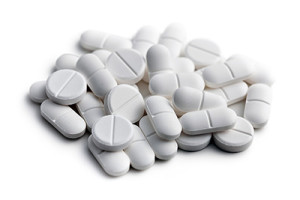 In persons addicted to alcohol, the dentist must take care of the prescribing of drugs. Mostly for the ones based on paracetamol composition for use as analgesics and antipyretics.
In persons addicted to alcohol, the dentist must take care of the prescribing of drugs. Mostly for the ones based on paracetamol composition for use as analgesics and antipyretics.
Specifically, in people who take higher amounts of paracetamol for longer time. And also if they are alcoholics. This combination may cause liver disorder and its failure.
Preventive dental education and the maintaining good oral hygiene are crucial in alcoholics. The latest research has shown that oral microflora contributes to the development of oral cancer.
The dentist must teach the patient how to brush his teeth and use dental floss. All to remove plaque and reduce the number of bacteria in the mouth. To patients with dry mouth or xerostomia dentist can prescribe preparations. Which are made to ease mouth dryness and stimulate the secretion of saliva.
Conclusion
Frequent and long-term excessive alcohol consumption has adverse effects on oral health. Some of the consequences of alcohol dependence may be less dangerous. Such as susceptibility to caries and periodontal disease and dental erosion. But some can be more serious and more complex such as cancers of the mouth, head and neck.
Reducing or stopping to drink alcohol is the only sure way to improve the oral and overall health. In all alcohol addicts, improving the oral health status can lead to improved self-perception. Which has proven to be an important factor in the treatment for alcoholism. Especially those who resort to alcohol to overcome the difficulties of everyday life.


